Georgia's not all about skiing- there are numerous resorts to keep you entertained this winter, both in and out of the snow. Drink warm mineral water, see the stars, explore castles and more. Check out our top choices below.
BORJOMI PARK
The Borjomi Mineral Water Park is something special and magical, full of snowy Christmas magic. Put on your winter gear and come for a walk with us…
On your right before the gates is the cable car which runs up the mountain, affording beautiful views over the town. At the top is a big wheel (closed in winter) and a vast expanse of woodland to picnic in.
Back at the park entrance, you’ll need to pay 2 GEL per person (children under 6, free). On your left you’ll see the original bottling factory, now empty (the Borjomi company uses others of the 40 local springs nowadays) save for a vast entrance hall, still in the original style, with a selection of enlarged black-and-white photos showing the history of Borjomi town, park and spring water- well worth popping in!
Head along the clean paved paths past snow-covered flowerbeds and twisted vines, to the famous pavilion at which you can easily imagine the elegant 19th century ladies and gentlemen partaking of the waters, though this is not the original fountain (which can be seen in a huge photo behind you adorning the old cinema building). On busy days there will be one or two ladies down near the taps to fill up your cups or bottles as requested. At quieter times you can go down yourself and drink as much water as you can stomach.
Not to everyone’s taste, the warm water is packed full of minerals, somewhat slimy in taste. Georgian’s swear by it as a cure for many ills- a belief which dates back centuries!
Energized with that “magic” Borjomi water, you can now explore the park further. The 3km path follows and criss-crosses the Borjomula River on sturdy wood-and-iron bridges, passing children’s rides (shut until May) and play areas. Next to the giant swinging pirate ship, the paved path ends and you can turn back or carry on into the woods.
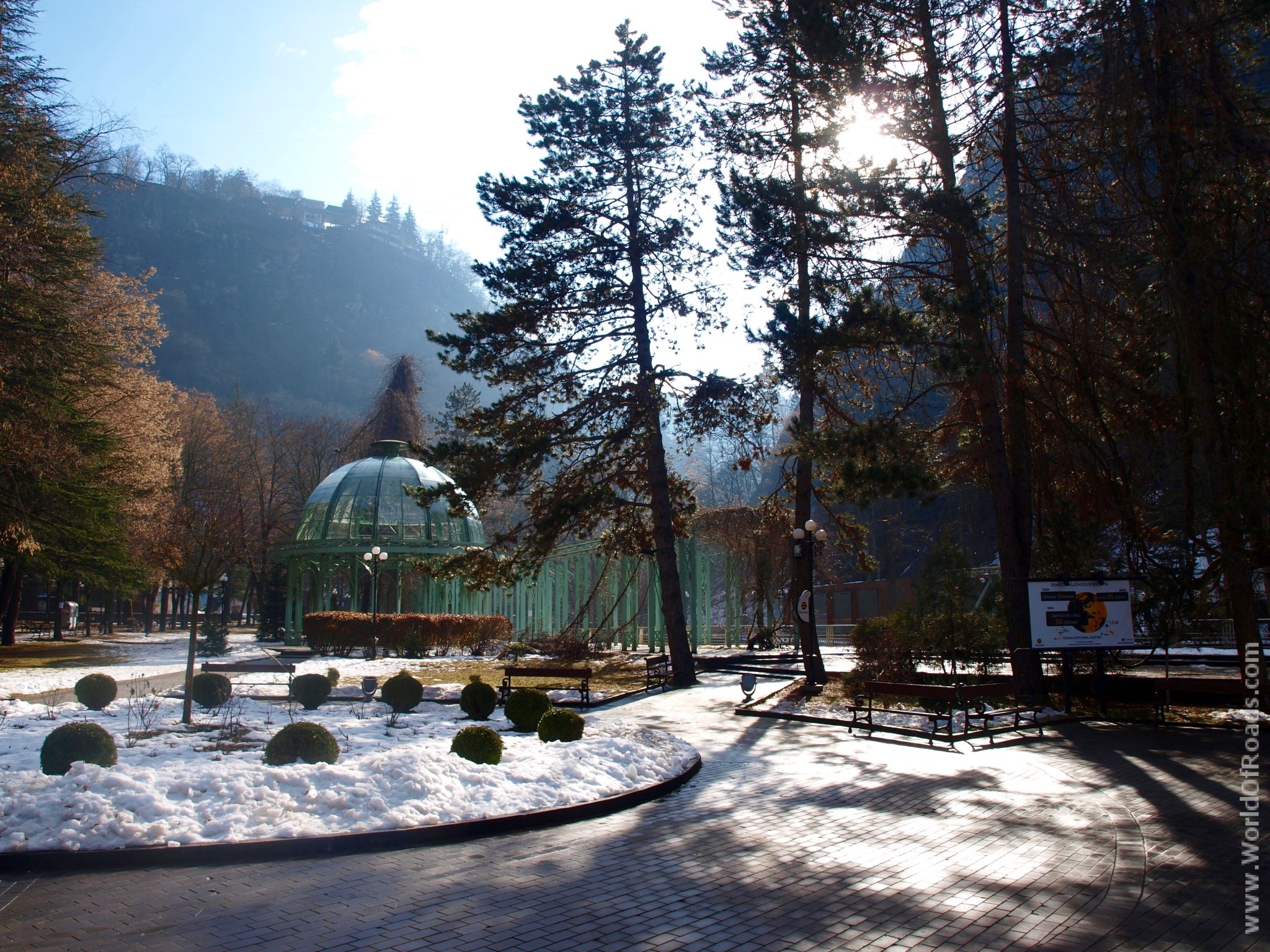
The woodland path is part gravel-part mud and if you’re wearing the shoes for it, and you’ve got your swimming gear with you, definitely head on in! The recently built Borjomi Crowne Plaza hotel very kindly offered to renovate the hot spring pool at the end of the park (3km from the entrance), dividing the single traditional pool into three, one of which is shallow enough for children, and all constantly fed by the 27-degree water flow. Women are as welcome as men and children. You’ll need to have paid the 5 GEL at the entrance to get past the security guard, and for that money you can stay all day! Get changed in the bathroom up the hill, choose a bench on the wooden-tile terraces and get soaking! When we were last there at 9:30am on a Sunday morning in late November, there were locals in the pools in their swimming trunks, so be brave- it’s good for you!
Need to know: Security guards are on duty throughout the park. The entire 3km route is pushchair-friendly, though the far section can get muddy depending on the weather and there is one mild hill to navigate.
BAKURIANI
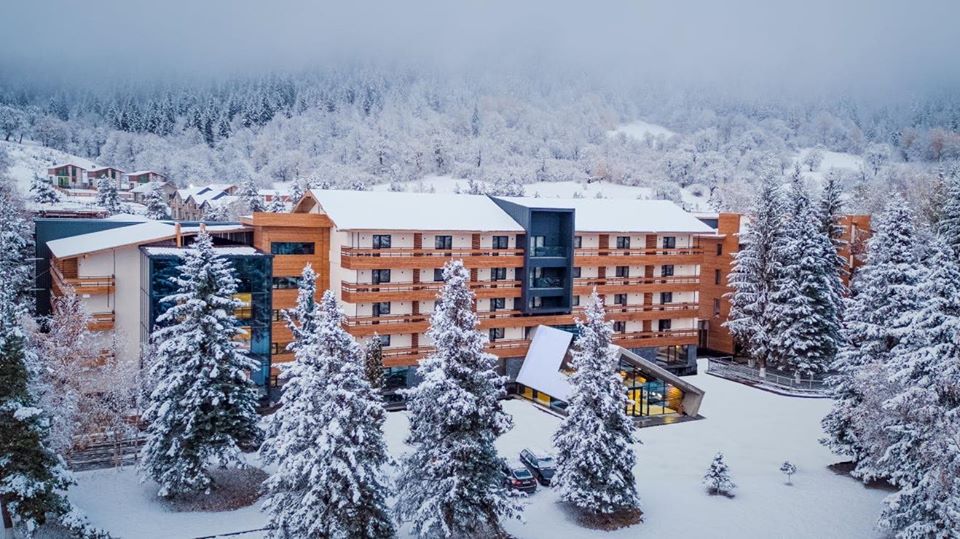
Half an hour east and up the mountain road from Borjomi is one of Georgia’s most popular ski towns, Bakuriani. Offering a more family-friendly, cheaper and down-to-earth atmosphere than the lavish slopes of Gudauri, it’s a favorite spot of many locals looking for a weekend or even a day’s get away from the hustle and bustle of the capital. Leave early enough in the morning and you’ll have the whole day to enjoy the picturesque, pine clad slopes of this little gem of the South Caucasus, skiing and snowboarding until nightfall. If you’re not a sport-person, you’ll still enjoy a snowy stay horse-riding or hiking.
RABATI FORTRESS / SAMTSKHE-JAVAKHETI MUSEUM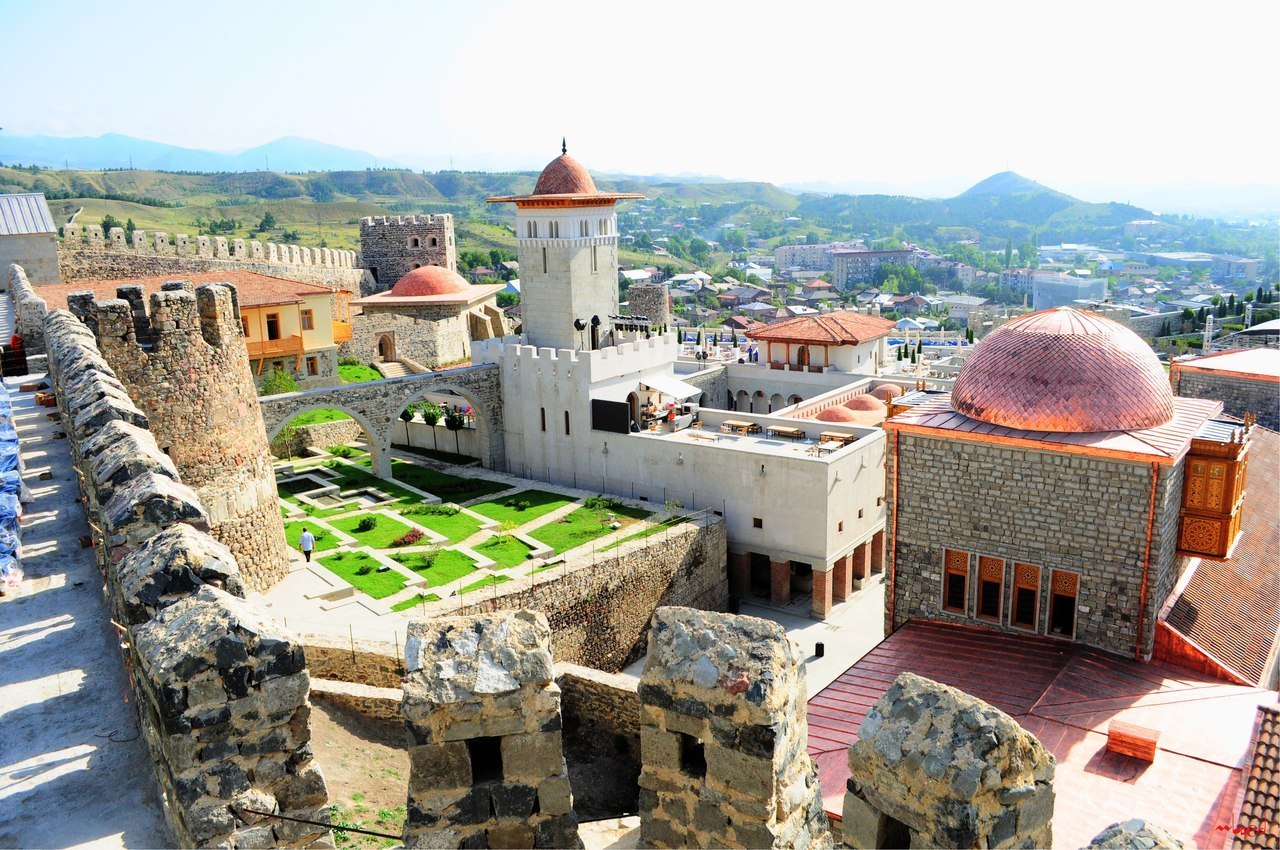
This impressive fortress in Akhaltsikhe town (which means “New Castle”) is easy to spot on the hill overlooking the town. You must pay to get in, but it’s well worth the visit. The castle was renovated in 2011-12 and several times prior to that since receiving heavy damage from Mongolian and Ottoman invasions in the XIV – XV centuries, as well as during the Russo-Turkish war in 1828. You’ll discover stone steps and courtyards, sunken baths and fountains, a mosque and a synagogue, and a great view from the tower.
The museum is located in the palace building and offers a rich exposition of archaeological and ethnographic artifacts that help you understand this region much better. It was reopened after renovation in 2018 and now features lighting and displays of European standard
1 P. Kharishirashvili St., Akhaltsikhe
(+995) 322 99 71 76
OPEN Tuesday – Sunday: 10 AM – 8 PM
ENTRANCE FEE
Adults: 6 GEL
Students: 3 GEL
Schoolchildren: 2 GEL
Children under 6: Free
ABASTUMANI RESORT & SPACE OBSERVATORY

The resort itself (a little past the official ‘town’ of Abastumani) is now a little run down. Once touted as one of the best anti-tuberculosis resorts in Georgia, it is now a shadow of its former grandeur. That said, it is interesting to see the ornate woodwork on dilapidated buildings constructed by German Prisoners of War, the stone building of the old baths ordered by the Romanov royal family in the 19th century, the ruins of Tamar’s Fortress and the surrounding deep green forest. Take a dip in the 40-degree mineral pool (follow signs to the Sulphur Baths); while nothing glamorous (unisex, changing rooms lining the pool and divided from it by curtains, no lockers, one toilet and one cold shower), the water itself is sure to soothe away your aches and pains. 10 GEL adults, 7 GEL for under 12s, not recommended for those with heart disorders.
Back outside, drive or walk up to the Space Observatory (well-signposted)- a narrow winding road through the forest. At 1650-1700 m. above sea level, the air is spectacularly clear and crisp and begs for a picnic spread, walk or sit- and-chill moment or two.
Park outside the gate to the Observatory complex, pay the entrance fee (9 GEL, kids free) and go for a wander. There are 14 telescopes, mounted between 1934 and 1978, most of which still function today, though they look a little worse for wear from the outside- unchanged since Soviet times. The first building on the left, housing the a 40cm Zeiss refractor from 1937 was in 2008 brought under the aegis of the Ilia State University. A USAID program turned a portion of the observatory building into a museum and the office of founder Eugeny Kharidze was restored to look as it had when he worked there in its heyday of 250 employees.
Take the tour: it begins in the round telescope room. The safety barriers are minimal, so keep small children close as they won’t have the concentration to absorb the lecture. The guide (Georgian/Russian speaking) will explain the history, the technicalities and answer questions, before taking you back out into the hall to look at images captured through the telescope, including the sun’s rays, Saturn’s rings and a valley on the moon named after scientist Mikhail Vashakidze, who was also among the first to discover polarized radiation in the Crab Nebula. Enjoy the abovementioned office and a display of space and observatory goodies in the main museum hall.
If you come after dark (last visit 9pm), you’ll get to peer through the giant telescope into space, as thousands of scientists have done before.
A cable car runs infrequently down into the village, worth the stunning views if you can get on it.
SAPARA MONASTERY
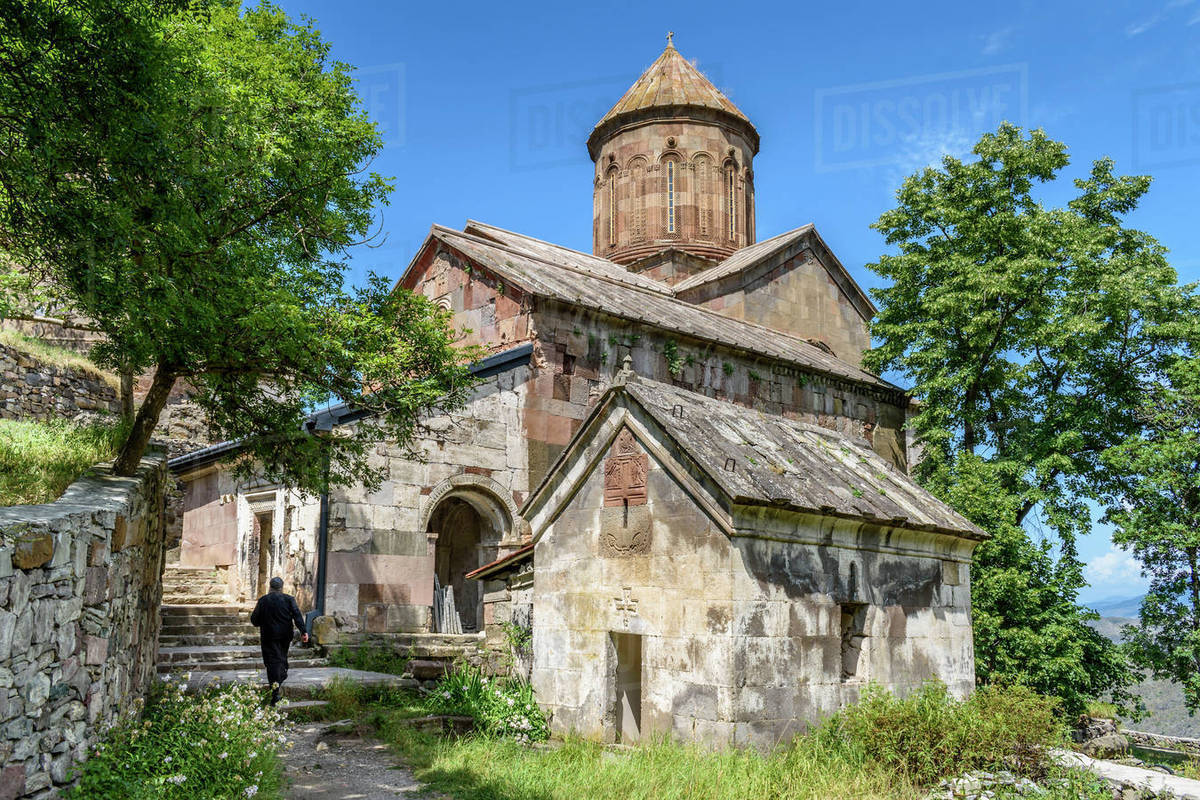
This is a Georgian Orthodox monastery near Akhaltsikhe dates back to the 9th century, and has counted among its monks many important figures in Georgian ecclesiastical history. At the end of the 13th century, Sapara came into the possession of the Jakeli family, whose head, Sargis Jakeli, kept good relations with the Mongols, enabling Samtskhe to enjoy a peace unusual for the time. When he grew old, Sargis took monastic orders and changed his name to Saba. His son Beka built the largest of the 12 churches here, St Saba's Church, named after the saint whose name his father had adopted, one of the most architecturally important churches of its time. The 14th-century frescoes inside are of very high quality.
From the end of the 16th century until the beginning of the 17th, the Sapara Monastery was abandoned due to the expansion of the Ottoman Empire into Samtskhe. The monastery's icons and other treasures were taken to mountainous Georgia for protection.
Today you can explore the church on the grounds and the woods beyond.
THE GREEN MONASTERY
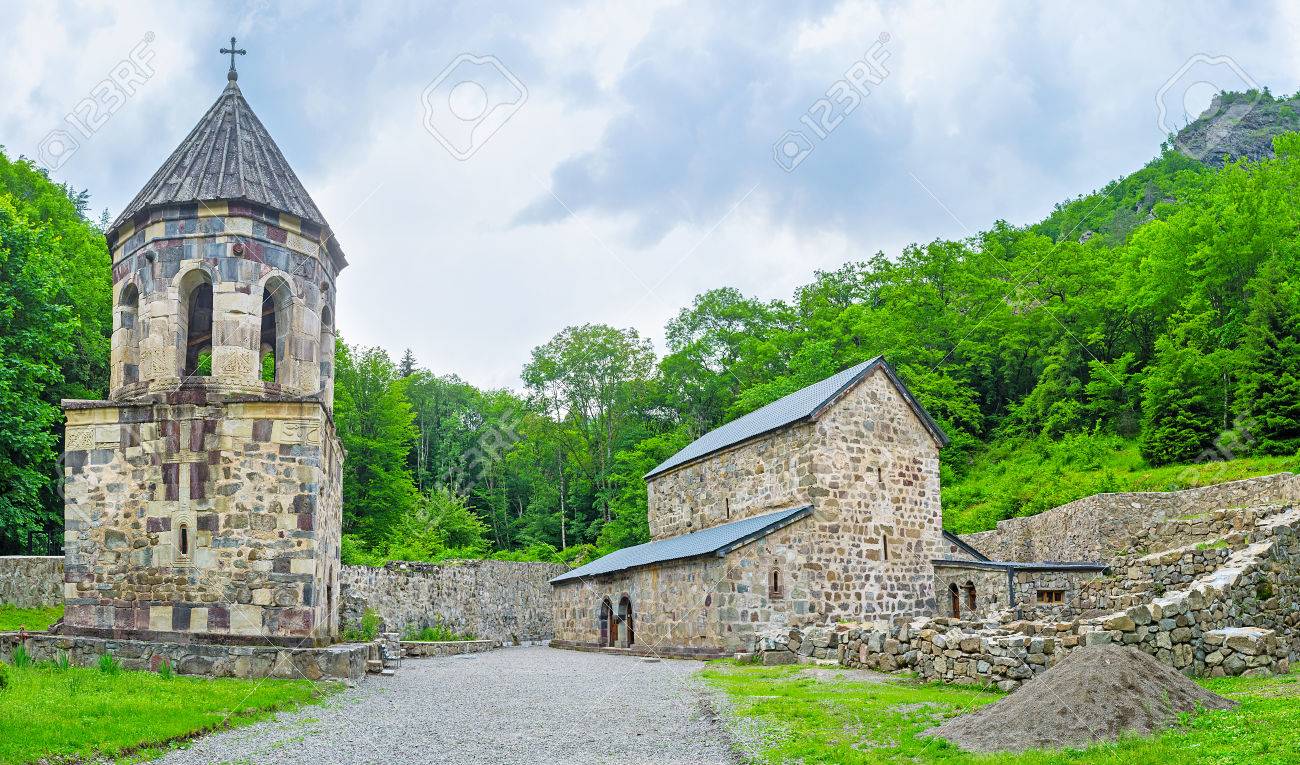
This hidden gem in the emerald-green valley near Borjomi is officially known as the Chitakhevi Monastery of St. George. It was built on the right bank of the River Kura somewhere between the 9th-10th centuries. The rough stones that were used all bear faint shades of green that vary in intensity. Because of this, it is referred to as ‘the Green Monastery’.
Take the main road south out of Borjomi for 13km until you come to a small road on the right. Follow the single-lane track into the forest. It is possible to drive the final kilometer to the monastery, but many people will advise you to walk it. The straight, even route to the monastery can be made in 10-15 minutes, but most tend not to rush. You will be lulled by the gentle flow of the river Kura, transfixed by the fresh, dewy air and seduced by the luscious landscape.
Nothing breaks the sublime silence once you arrive at the courtyard, which, thanks to the monks, is kept in pristine condition. Step inside and immediately you will smell the rich, echoing scent of ceremonial incense. It is a truly spiritual place that will make you feel like you are closer to God.
It has not always been this peaceful, though. The Green Monastery was raided in the 16thcentury during the invasions of Shah Thamaz. Dozens of monks were violently tortured and killed and it is said that the bloody remains were tossed into the adjacent river. Many believe that this is where the rocks in the river bed got their morbid, crimson appearance. They are known as the ‘bloody stones’ and can be seen along the length of the river directly adjacent to the monastery. The rocks are said to have a healing power and maintain the red hue regardless of the season.
Need to know: Dress modestly. Women must cover their hair, men must wear long trousers. Cameras are allowed, flash must be off. Entrance is free, but a donation is optional
TSKHALTUBO
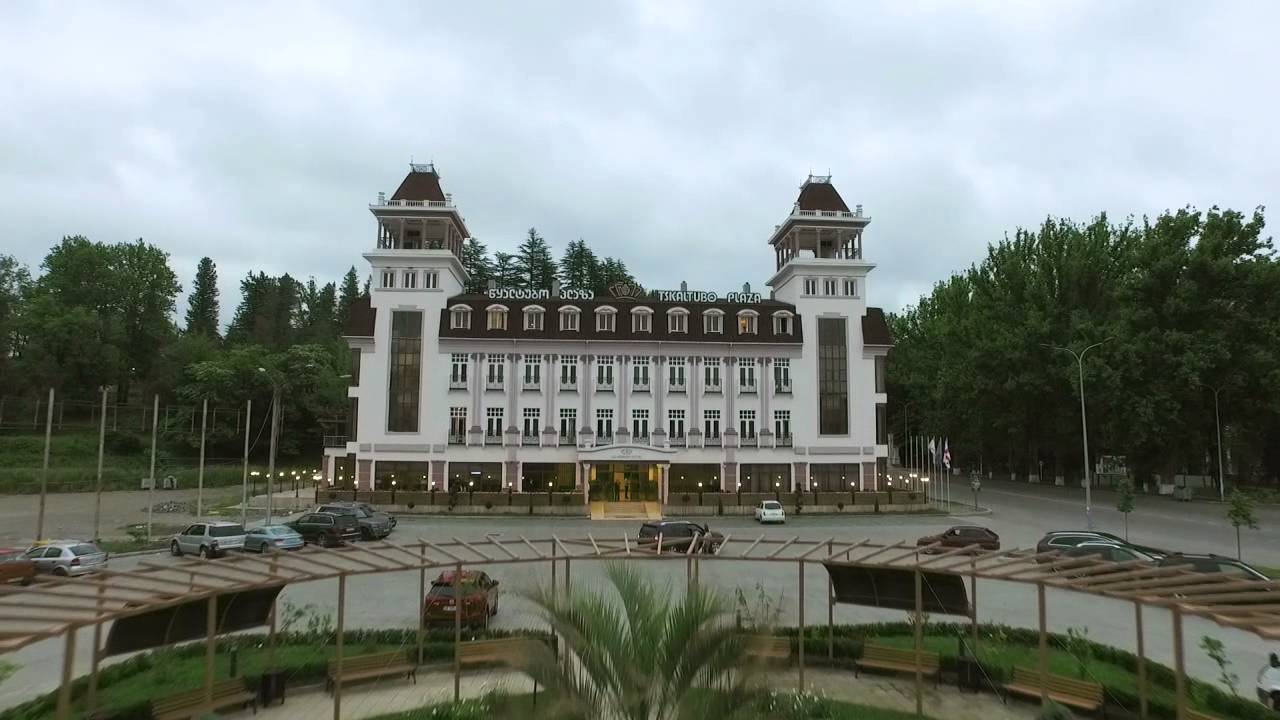
Should you tire of the cold this winter, we can highly recommend a soak in the baths of Tskhaltubo, a well-known spa resort near Kutaisi in western Georgia. A hit with the tourists in Soviet times, the area is being slowly redeveloped and modernized. That said, the giant Soviet sanitoriums still loom over the central park, some filled with squatters, the remaining IDPs from the 1990s war in Abkhazia, others falling into horror-house ruin as the smaller Europeanized bath-houses within the park take the easier custom.
Tskhaltubo is a village built around a huge central woodland and park area whose paths, lighting and bath houses have been renovated. Most holidays and evenings see the local community strolling, exercising or playing with their children there.
The resort’s fame was won by its unique mineral water, well-known even in ancient times. The water offers stable-chemical properties, belonging to the class of “weak radon, chloride-hydrocarbonated-sulphate” and “sodium-calcium-magnesium” waters, rising from the earth at a steady temperature of 33-35-degree Celcius.
The waters are said to help treat illnesses of the locomotor, heart-blood vessel, and nervous systems, gynecologic disorders, and skin and endocrine diseases.
GUDAURI 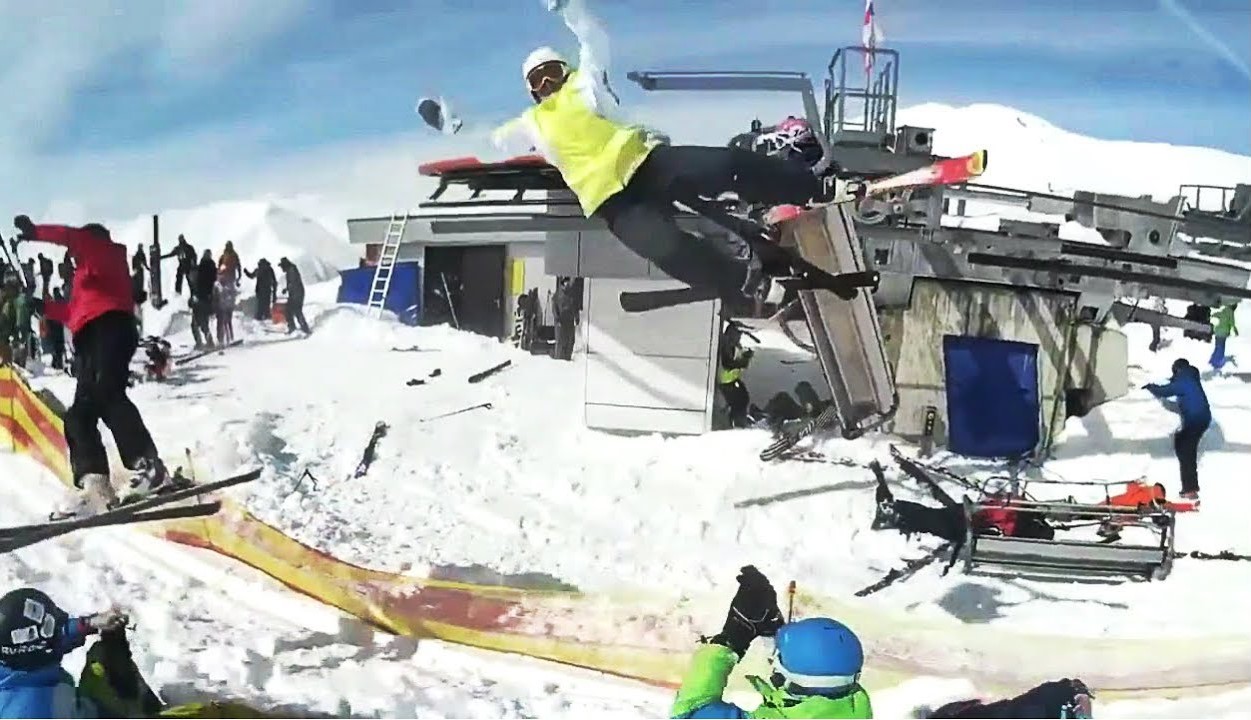
Winter in Georgia is a time for enjoying the fruits (and jams and wines!) of the harvest, celebrating the New Year and Christmas with family and friends, and taking advantage of the incredible winter mountain resorts Georgia has to offer. There are ski resorts throughout Georgia- east, south, west and north of the capital and of varying infrastructure and style. Bakuriani is more family-oriented, Gudauri is for extremists and Mestia and Goderdzi, the ‘new kids,’ are just discovering their niche.
At 2000m above sea level, and 120km north of the capital, the resort town of Gudauri is Georgia’s most popular ski destination. Highly rated even among the international skiing community, the season gets underway at the tail-end of December lasting until the end of April, with the best snow falling in January and February. There are 70km of pistes of all difficulty levels (black, red, blue, and green), between an altitude of 2000m to 3285m, connected by five chairlifts and a gondola line.
Traditional skiing and snowboarding aside, Gudauri also offers visitors the chance to go freeriding along the trails near the ski lifts and in the surrounding area of the western and eastern slopes of Mount Chrdili and Bidara, and the northern slopes of Mount Sadzele. Adrenaline junkies can also have a go at heli-skiing/heli-boarding with Franco-Georgian company Heliksir, paragliding, and speedriding (an extreme combination of paragliding and skiing).
After-ski activities include hostel/hotel-organized music events, parties, barbeques, bowling and billiards.
Daily minibuses from Didube station in Tbilisi depart for Gudauri every hour from 08:00-18:00 for 7 GEL, with the arrangement in place for the return journey. You might struggle to find free seats back to Tbilisi, so try to leave at non-peak hours.
THE GERGETI TRINITY CHURCH
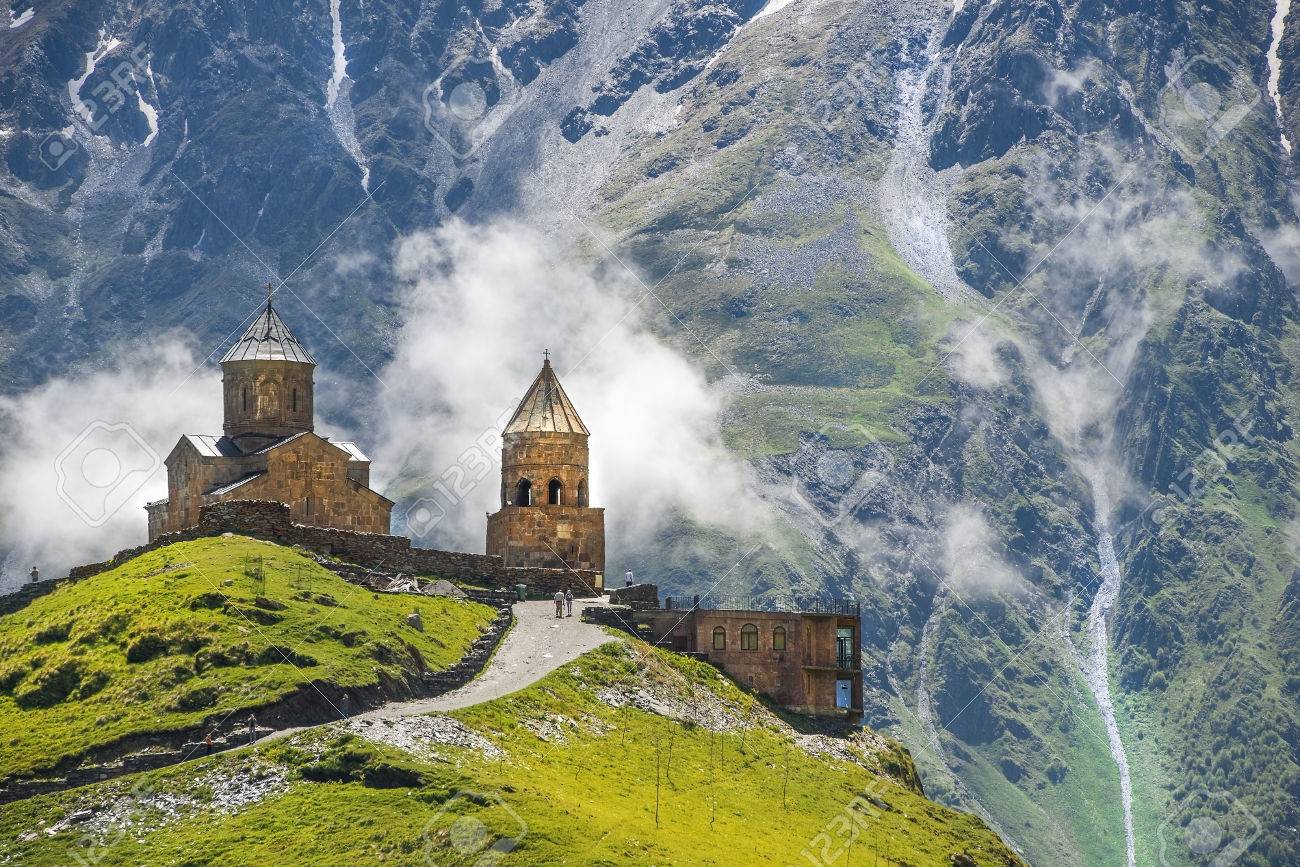
Surrounded by the mountains of the Caucasus, the Gergeti Trinity Church and nunnery is one of the most famous travel destinations in Georgia. The church was built in the 14th century and is the only cross-cupola church in Khevi province.
The church was named after the village Gergeti, situated on the right side of the River Tergi, opposite Stepantsminda. Stepantsminda can be found in the north of Georgia in the region of Mtsketa-Mtianeti. From 1921 to 2006, the name Stepantsminda was changed to Kazbegi, in honor to the georgian writer Aleksandre Kazbegi.
Need to know: Unlike in other churches in Georgia, taking pictures is not allowed inside the holy walls.
MESTIA
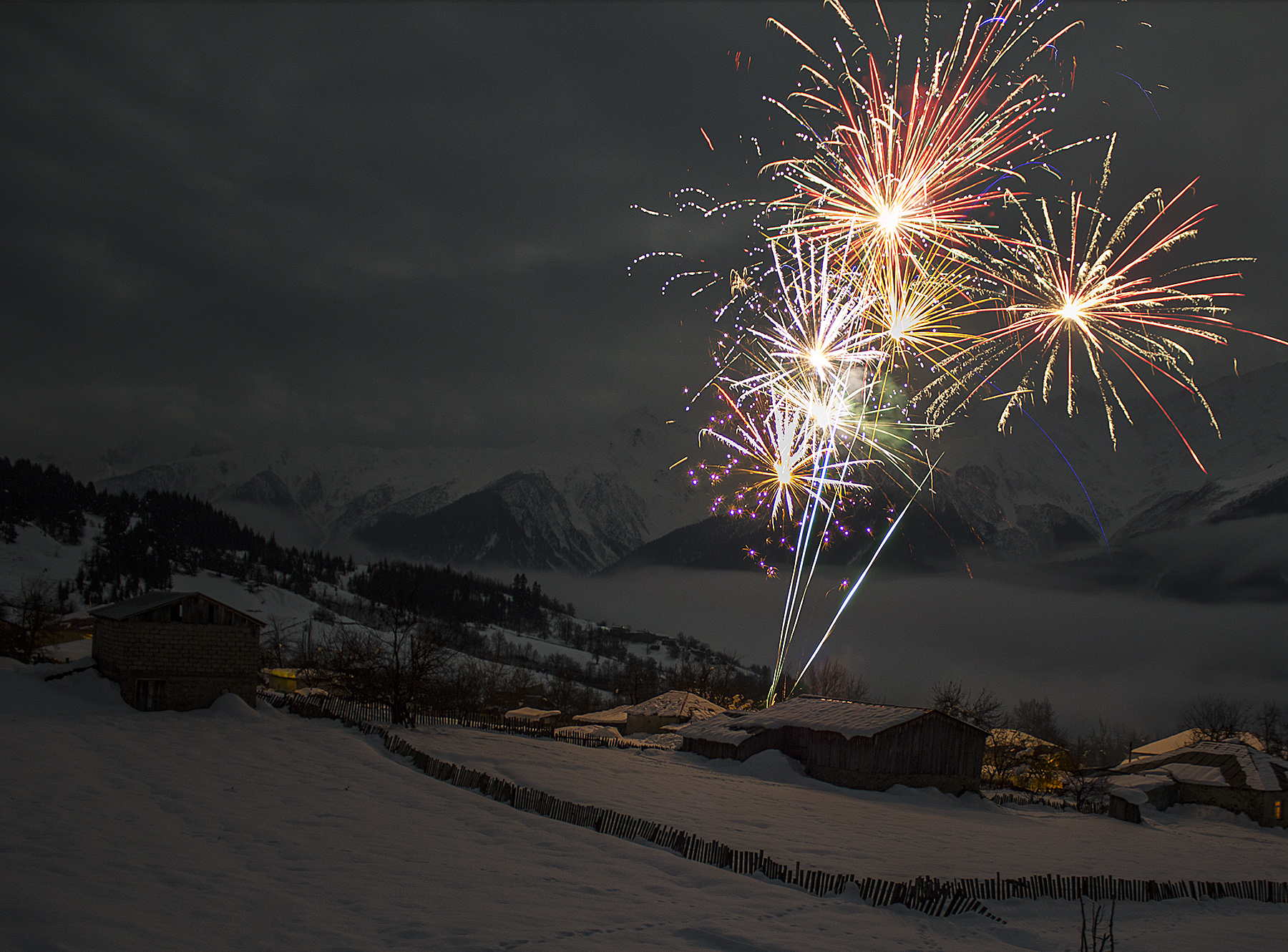
Photo by Tony Hanmer
According to the classical 19th century Georgian writer Ilia Chavchavadze, if you haven’t seen Svaneti, you can’t really claim to have been in Georgia. Its roads, museums and watchtowers renovated, its ski resorts up and running long after those elsewhere in Georgia have melted, Svaneti is Georgia’s faraway ancient fortress.
With around 200 magnificent stone watchtowers over a millennium old, Svaneti feels straight out of a Middle Earth province. Its people, the Svans, have their own language, distantly related to Georgian but incomprehensi- ble to non-Svan Georgians, with four dialects and no fewer than eighteen vowels among them.
SVANETI MUSEUM
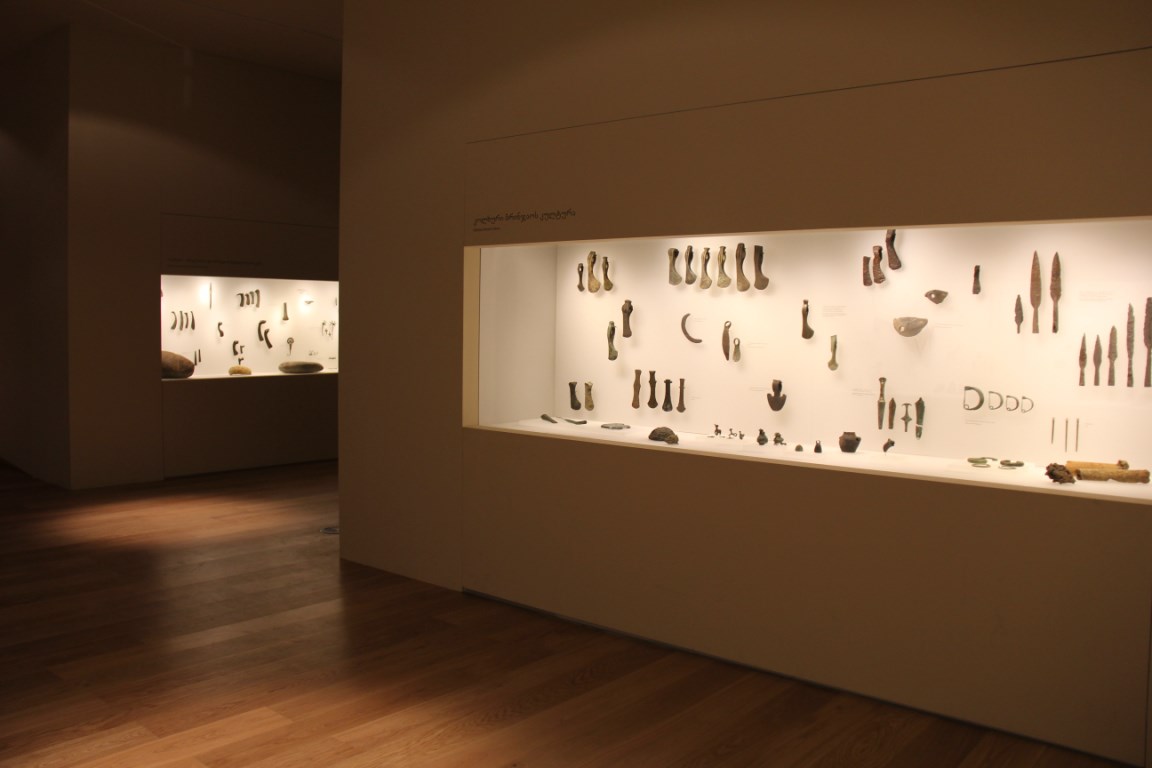
Established in 1936 as a local museum, in 2013 it was opened in a modern building of international standards. It preserves items of Christian treasure, including 9th-18th century masterpieces of world importance such as the Icon of the Forty Sebastian Martyrs, an embroidered Byzantine icon, a Venetian Cross, a jug gifted by Queen Tamar, and the earliest remaining sample of illustrated manuscript - the Adishi Gospels (897). Visitors can also enjoy an exhibition of Georgian ethnography.
7 A. Ioseliani Str., Mestia
(+995) 322 15 73 00
By Katie Ruth Davies
